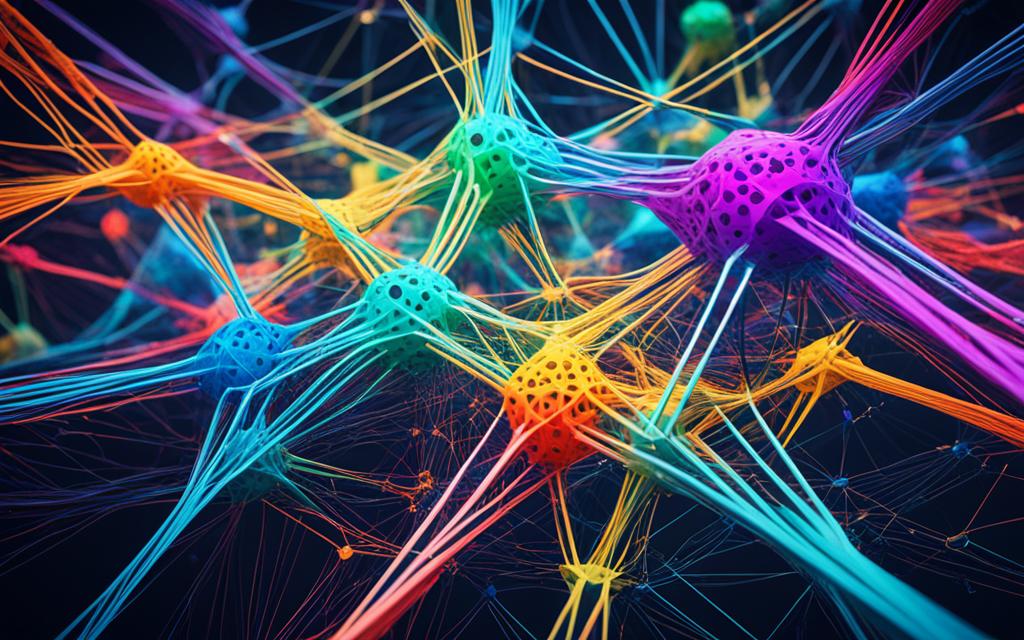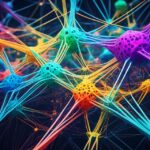Table of Contents
Generative AI, also known as Generative Adversarial Networks (GANs), is an emerging technology that is revolutionizing various industries by automating creative tasks and generating unique content. In this article, we will delve into how generative AI works, its potential benefits, and the risks associated with its implementation.
Generative AI utilizes machine learning algorithms, such as neural networks, to analyze extensive datasets and learn patterns. By doing so, it can generate new content, including images, videos, and text, that exhibits similar styles or structures. This technology opens up a world of possibilities for businesses and individuals, enabling them to explore new ideas and push the boundaries of creativity.
One of the notable types of generative AI is GANs, which consist of two neural networks working in opposition. The generator network creates new content based on random noise, while the discriminator network attempts to differentiate between the generated and real content. Through training, these networks compete, resulting in the generation of more realistic content over time.
The benefits of generative AI are vast. It empowers artists, designers, and marketers to streamline their creative processes, saving time and effort. By automating content generation, generative AI fuels innovation, as it can produce unique and engaging content that captures audience attention.
However, as with any technology, generative AI also carries certain risks. The ability to generate convincing fake content raises concerns about misinformation and potential harm to individuals or businesses. Additionally, the ethical implications of using generative AI in industries like journalism and public relations require careful consideration.
In the upcoming sections, we will delve deeper into the various types of generative AI and explore both the benefits and risks associated with this groundbreaking technology.
Types of Generative AI
Generative AI encompasses various types that find applications in different domains. One prominent example is generative adversarial networks (GANs). GANs comprise two neural networks, the generator network and the discriminator network.
The generator network generates new content by utilizing random noise as input, whereas the discriminator network’s role is to differentiate between the generated content and real content. Through continual training, these two networks engage in a competitive process, resulting in the production of increasingly realistic content over time.
GANs have demonstrated exceptional capabilities in generating synthetic data that closely resembles real data. This technology has found application in diverse fields, ranging from image synthesis, video generation, and text generation to style transfer and data augmentation.
Other types of generative AI include:
- Variational Autoencoders (VAEs) – These models are adept at learning latent representations of complex data and can generate new data by sampling from these learned representations.
- Autoregressive Models – These models generate content sequentially, often by predicting the next element given previous elements.
- Neural Turing Machines – These models incorporate external memory access alongside neural networks to generate complex and structured output.
Each type of generative AI serves distinct purposes and has unique strengths, enabling their application across various domains and creative endeavors.
Continue reading to explore the benefits and risks associated with generative AI in the following section.
Benefits and Risks of Generative AI
Generative AI, with its automated content generation capabilities, offers a range of benefits across various industries. One significant advantage is its potential to enhance creativity and foster innovation. By harnessing the power of generative AI, businesses and individuals can delve into uncharted territories, exploring new ideas and possibilities that can pave the way for the development of truly unique and captivating content. In sectors like art, design, and advertising, where creativity is cherished, generative AI opens doors to boundless opportunities.
Furthermore, generative AI can streamline processes, saving precious time and resources. With the ability to generate content autonomously, tasks that would require hours or even days of manual work can now be accomplished with a few clicks. This newfound efficiency not only boosts productivity but also allows professionals to focus on more complex and strategic aspects of their work.
However, as with any emerging technology, there are risks associated with generative AI. The most prominent concern revolves around the potential misuse of generated content. There is a possibility of unethical practices, such as the creation of deepfakes or manipulated media, which can lead to misinformation and harmful consequences. Therefore, it is crucial to implement robust ethical guidelines and regulatory frameworks to ensure responsible and transparent use of generative AI.
Moreover, another risk involves biases that can be inadvertently embedded in the generative AI models. If not carefully monitored and addressed, these biases can perpetuate existing inequalities and reinforce discriminatory practices. It is imperative to prioritize diversity, equity, and inclusion in the development and training of generative AI models to mitigate these risks and ensure fair and unbiased outcomes.
FAQ
What is generative AI?
Generative AI refers to a type of artificial intelligence that is capable of producing or creating new content, such as images, videos, and text, based on patterns and data it has been trained on.
How does generative AI work?
Generative AI uses machine learning algorithms, such as neural networks, to analyze and learn from large datasets. It then generates new content that is similar in style or structure to the training data.
What are the types of generative AI?
One type of generative AI is generative adversarial networks (GANs), which consist of a generator network and a discriminator network that compete with each other to generate more realistic content over time.
What are the benefits of generative AI?
Generative AI can enhance creativity and innovation by automating the generation of content, allowing businesses and individuals to explore new ideas and possibilities.
What are the risks of generative AI?
Some risks of generative AI include the potential for misuse or manipulation of generated content, as well as concerns about the ethical implications of creating content that is indistinguishable from reality.













